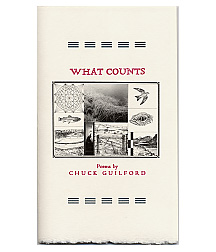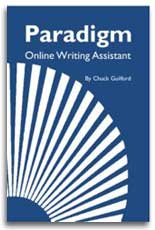A Skeleton Essay
You may see that each "good reason," each support sentence, is like a miniature thesis statement. It, too, is a claim that requires support to be convincing. And the next step is to develop each "good reason" into a solid, detailed paragraph.
Look back over your notes, scour your memory, and squeeze your imagination to discover what facts, details, examples, and illustration can help your reader understand your ideas and see the reasoning they are based on. Consider your support sentences one at a time and show reader the specifics that have led you to make these claims.
In your essay, each "good reason" will become the topic sentence of a paragraph. And each topic sentence can be opened and developed much like a thesis statement. Consider the following example:
Skeleton Essay: An Example
|
Thesis: Lucille Kooch is an outstanding high school biology teacher. |
| Reason 1: She knows the material well. | Reason 2: Her course covers a large amount of material. | Reason 3: She motivates her students to learn. | ||
| Reason 1.1: She seldom needs notes to lecture. | Reason 2.1: She covers ecology. | Reason 3.1: She is entertaining. | ||
| Details: | Details: | Details: | ||
| Reason 1.2: She gives thorough, in-depth answers to all questions. | Reason 2.2: She covers taxonomy. | Reason 3.2: She is demanding but fair. | ||
| Details: | Details: | Details: | ||
| Reason 1.3: She has a doctorate in biology. | Reason 2.3: She covers microbiology. | Reason 3.3: She stresses practical application of the material. | ||
| Details: | Details: | Details: |
While these thirteen sentences alone don't fully develop the central idea, they do provide a framework for that development. They are a "skeleton essay" which allows you to see how the various parts of your paper relate to your thesis. Much like an outline, they can help you move ahead in your writing with the security and assurance that come from having an overall plan.While these thirteen sentences alone don't fully develop the central idea, they do provide a framework for that development.
You don't need to list three or four sentences under each topic sentence, but since these sentences will guide you in developing your paragraphs, you'll want as many as seem reasonable. If you can't come up with at least one or two such guide sentences in support of a topic sentence, you should question whether you'll be able to write a solid paragraph on the idea. You might need to rethink and reword the topic sentence so that it offers more room for expansion.
Activity
6.9 Take the best thesis statement you've generated so far and write out a skeleton essay that contains topic sentences and guide sentences for each paragraph. Exchange this skeleton essay with a partner and discuss your progress. As you discuss the papers, pay special attention to whether you can imagine a clear, fully developed essay growing out of what you see. What points need further clarification and support? What points are starting to look especially strong and convincing?
- << Prev
- Next



